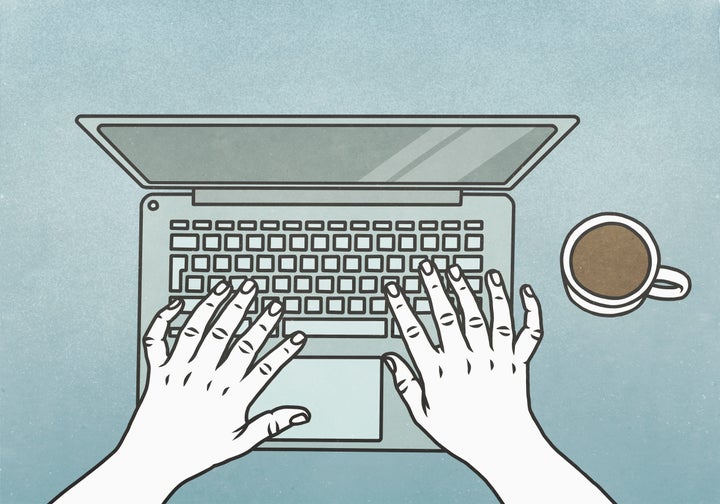Listen to our weekly podcast Am I Making You Uncomfortable? about women’s health, bodies and private lives. Available on Spotify, Apple, Audioboom and wherever you listen to your podcasts.
Working from home can be a real pain in the neck – literally.
People have converted spare rooms, dining room tables and bedrooms into makeshift offices during the pandemic. But few have had much guidance on making these new spaces ergonomically safe, says Kermit Davis, an expert in office ergonomics at the University of Cincinnati College of Medicine.
“You can use your laptop from home, but it is designed to be a short-term option,” he says. “It should be used for a few hours while travelling. It is not meant to be used for eight or nine hours each day.”
The reality of using a laptop for a full working day, multiple days a week, is that it starts to take a toll on your back, shoulders and neck.

The issue is that screens are smaller, so you often have to look downwards as they sit well below eye height.
There’s also a temptation to work from your bed and sofa – a survey by Nuffield Health found a quarter of Brits have taken up residence on their sofa with a laptop, and one in four are sitting in bed or the living room floor (17%) to work.
And this is wreaking havoc on posture. The same survey found seven in 10 Brits working from home are experiencing more aches in the back, neck, shoulders, and legs, more problems with eye strain, and more headaches than usual.
After analysing photos of work from home setups submitted by employees at the University of Cincinnati during the coronavirus pandemic, Davis identified some key issues that could be adversely affecting workers.
Many chairs were the wrong height: 41% were too low and 2% were too high. Support of the back of the chair wasn’t used by 69% of workers and often without any support for the lower back. The position of a computer monitor was often too low or off to the side – and three quarters of monitors were laptops, which were too low relative to the workers’ eye height.
So what can you do about it?
If you use your laptop on your lap, Davis recommends placing a lap desk or large pillow underneath to raise the monitor.
Ultimately, though, it’s best to try and work at a desk or table, he says. If you can do this, put your laptop on a laptop stand (a stack of books or a box will work fine), and use an external keyboard and mouse if possible.
Take a break from working every 30 minutes, which will help minimise injury to your back, shoulders and arms, says Davis. “The body doesn’t like static postures continually,” he says. “You don’t want to do all sitting or all standing all the time. You want to alter your position and change it up throughout the day.”
If you keep forgetting to take breaks, download an app like The Work Break Timer, or Google Chrome extensions like Break Timer or Micro Breaks.
Not everyone can spend hundreds of pounds on a new chair or other equipment when working from home. But thankfully there are some cheap and easy fixes that will go a long way in improving your WFH set-up, says Davis.
Tips for improving your work setup without spending money:
Place a pillow on your seat to elevate the seat height.
Place a pillow or rolled up towel behind your back to provide lumbar and back support.
Wrap armrests with material when they are low and not adjustable.
Move your chair closer to the desk or table to encourage having the back against the back of the seat.
An appropriate standing workstation should have the top of the monitor at eye height and directly in front, keyboard at a height so that forearms are parallel to the ground (approximately 90° elbow angle), and a soft or rounded front edge to the working surface.
If getting a new chair is not possible, rotating between a poor sitting workstation and a standing workstation would be the next best practice. Makeshift standing workstations include: an ironing board, a kitchen counter, the top of a piano, a clothes basket placed upside down on a table or desk, or a large box under a laptop.
Don’t let your feet dangle down. If you can, make a footrest out of books or boxes – ideally your thighs should be almost parallel to the floor and your hips slightly higher than your knees.